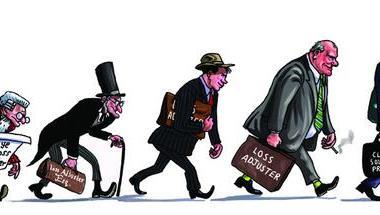Kiln debate highlights knock-on effects for insurers and reinsurers
Insurance market professionals estimate that within ten years there will be a serious shortage of loss adjusters worldwide if the industry does not act soon.
The shortage could seriously hamper the insurance industry’s ability to respond to a high volume of claims should a major catastrophe take place.
A box-ticking culture for smaller claims has replaced solid, on-the-job training, and loss adjusting is no longer seen as a viable career for graduates, offering training and clear progression. In most loss adjusting firms, the majority of adjusters are now aged 45 and over.
At a briefing hosted by Kiln on Wednesday, a panel of sector specialists including underwriters, brokers, claims managers and the sector’s professional bodies debated the problem. An audience of key industry publications then took the opportunity to quiz them about their concerns.
Robin Hargreaves, active underwriter of the property division of Kiln’s Syndicate 510, who hosted the discussion said: “This is a serious issue for everyone in the global insurance market. The best and most experienced loss adjusters in the business are now middle-aged, and there appears to be a lack of qualified new blood to take their place.”
Ashley Lawrence, Kiln’s head of claims, agreed: “This shortage is already being felt and is beginning to have a negative impact on the speed of claim resolution”. He explained that seeking to cut the cost of third party outsourcing has led to many companies handling smaller claims in-house. “This has led to a dumbing-down of loss adjusting expertise which is being replaced by a box-ticking culture that is actually costing companies more in the long run.”
Lawrence added that the shortage of loss adjusters causes delays in the claims filing process which would in turn have financial implications for insurers and reinsurers. “The longer a claim is open, the more it is costing money and the higher the expectations of the insured,” he said.
David Eacott, divisional director of claims at broker Cooper Gay also expressed his concern: “This is a huge problem that the whole industry is talking about. As brokers, our focus is on looking after our clients, so we need good adjusters in place to do that properly”. Eacott added that the lack of an apprentice programme was part of the problem. “I know of a typical loss adjusting firm where the youngest adjuster is now 41 years old. Where are the 20 year olds who are going to handle large and complex claims – or even the day-to-day ones – in 20 years’ time?”
Chartered loss adjuster Paul May, chairman of Concordia Consultancy, spokesman for the Chartered Institute of Loss Adjusters (CILA) and deputy president of the International Federation of Adjusting Associations (IFAA), said: “CILA recognises that the industry is already working beyond its optimal capacity, and we know that recruitment is a problem, particularly at apprentice and graduate levels”.
May added that CILA has, amongst other initiatives, produced a recruitment DVD currently being distributed to careers offices and at insurance industry events. There was general agreement that the industry needs to invest in the future by addressing these issues now.
Hosted by comedian and actor Tom Allen, 34 Gold, 23 Silver and 22 Bronze awards were handed out across an amazing 34 categories recognising brilliance and innovation right across the breadth of UK general insurance.









































